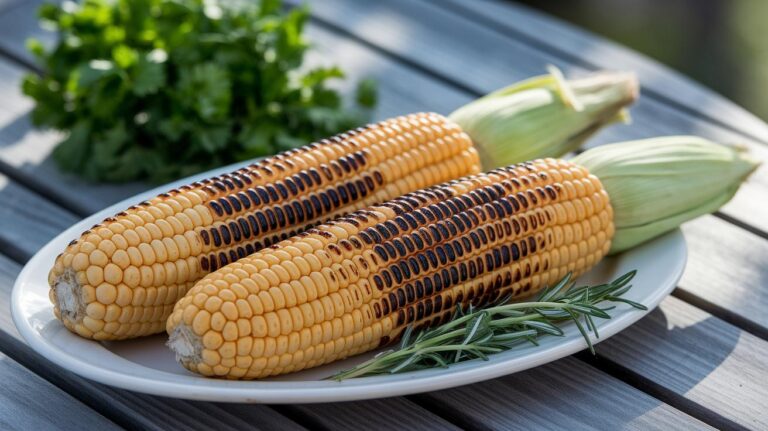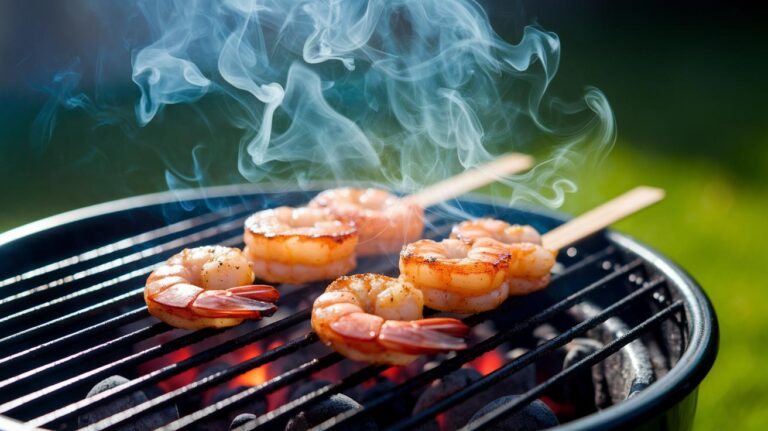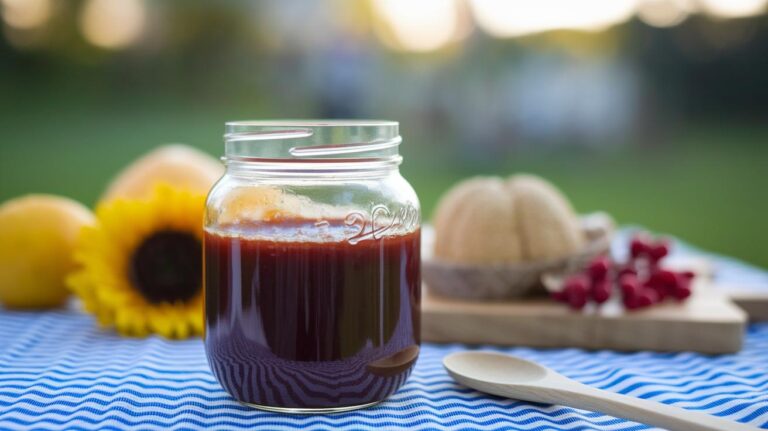Homemade Spice Rub For Charcoal-Grilled Pork Ribs: Epic
Ever think those store‐bought spice mixes can’t be beat? Me too. But here’s a tip that’ll flip your grill game.
Picture this. You’re by the ribs, brown sugar bubbling and turning golden. The air is thick with sweet caramel notes. Below, warm coals glow like tiny embers.
Now, mix paprika (sweet red pepper), kosher salt, and black pepper. This makes a solid, salty-um base. Stir in garlic powder and onion powder for savory oomph. Then add a pinch of cayenne pepper (a hot spice). It gives a little spark to every bite.
Rub it all over your ribs before they hit the grill. You’ll get juicy, tender ribs packed with flavor. They vanish fast at any backyard cookout. By the way, my kids beg for seconds.
So go ahead, give your next barbecue a homemade kick!
DIY Spice Rub Recipe for Charcoal Grilled Pork Ribs
| Ingredient | Amount |
|---|---|
| Brown sugar | 1/4 cup |
| Paprika | 2 tablespoons |
| Kosher salt | 1 tablespoon |
| Ground black pepper | 1 tablespoon |
| Garlic powder | 1 teaspoon |
| Onion powder | 1 teaspoon |
| Cayenne pepper | 1/2 teaspoon |
- Gather all your dry rub ingredients. Brown sugar brings a sweet kiss, paprika warms things up, kosher salt and black pepper add a sturdy base, and garlic powder and onion powder give that savory boost. A little cayenne pepper (a hot spice) wakes up the whole mix.
- Stir everything until the brown sugar breaks up and the cayenne is scattered in tiny flecks. Take a sniff, the sweet and smoky scent should make you smile.
- Sprinkle the spice blend evenly over your pork ribs, pressing gently so every grain sticks. You’ll feel the coarse sugar and spices cling to the meat.
- Let the ribs rest at room temp for 30 minutes. This pause lets the flavors sink in before they meet those hot charcoal coals.
- For an even deeper punch, wrap the seasoned ribs in foil and tuck them into the fridge for a few hours. The chill time helps those spices dive right into the meat.
Pork Ribs Prep and Charcoal Grill Setup for Smoky Ribs
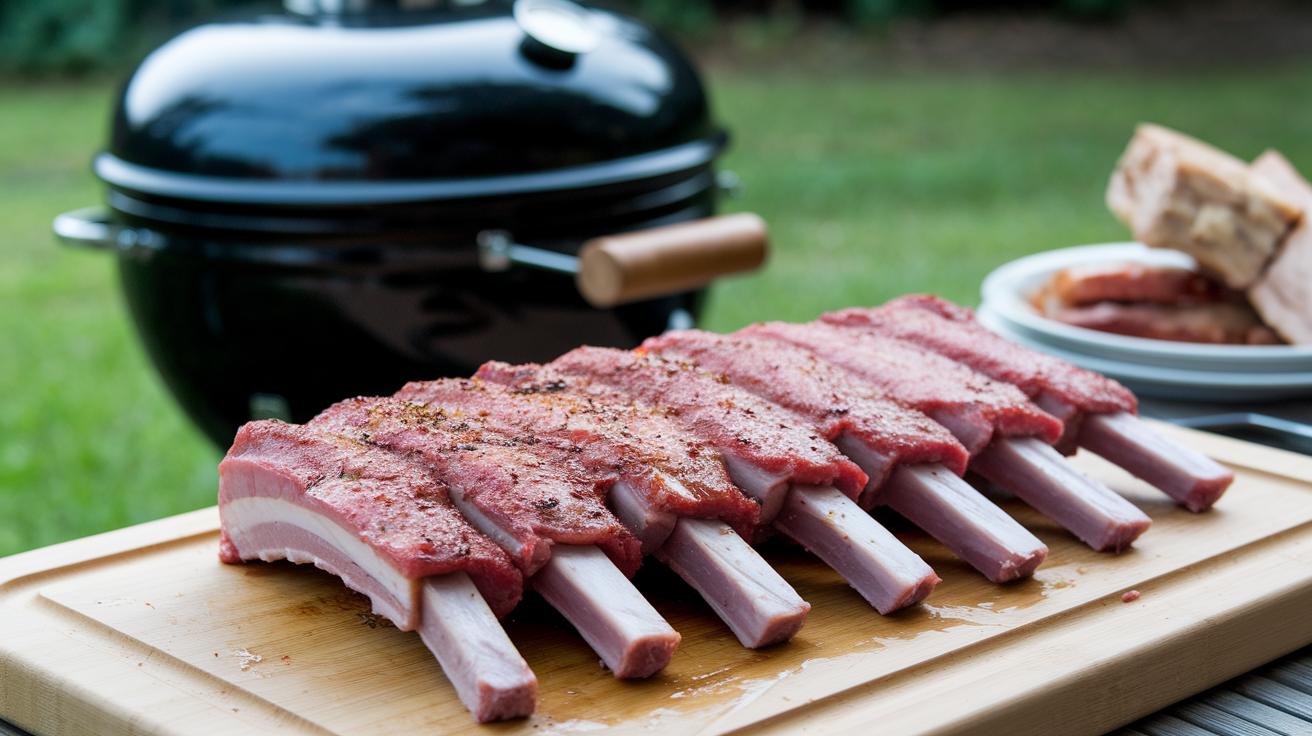
Ever wondered how to pick the best rib cut? Baby back ribs are lean and cook in a snap, while St. Louis style ribs are meatier and pack a bold bite. Oops, almost forgot, trim off extra fat so your rub (a mix of herbs and spices) grips every curve.
And here’s a trick: peel off the membrane (that thin silver skin on the back). Slide a butterknife under it, give it a gentle tug, and seasonings will sink right into the meat.
Now, fire time. Grab a chimney starter (a metal tube that holds charcoal and lights it fast). Skip that lighter-fluid smell, right? I like lump charcoal (charcoal made from chunks of wood) because it flares up quickly. But if you need a longer burn, mix in some briquettes (pressed charcoal pieces).
Next, set up a two-zone fire. Pile glowing coals on one side and leave the other side clear. You get a hot spot for searing and a cooler side for slow smoking, it’s like having an oven on your grill.
- Trim off loose bits of flap and extra fat with a sharp knife.
- Slide a butterknife under the membrane and peel it away.
- Fill your chimney starter with charcoal and light newspaper beneath.
- Dump the glowing coals to one side, keeping the other side clear.
- Place a probe thermometer (a tool that watches grill heat) near the ribs.
- Move the ribs to the indirect side, close the lid, and let the smoke work its magic.
Keep an eye on your grill thermometer and aim for 225 to 250°F (about 107 to 121°C). Cook indirect for 3 to 4 hours, turning the ribs now and then and adding coals if the fire cools. Then lean in and enjoy that smoky aroma, tender, fall-off-the-bone ribs are just around the corner.
Charcoal Grilling Techniques for Perfect Bark and Smoke
Have you ever flipped ribs and spotted that dark, crunchy crust? That’s bark (the crunchy crust that locks in smoky flavor). It forms when your spice rub, brown sugar (sweet caramel notes) and paprika (mild peppery smoke), meets gentle, indirect heat. Just push the coals to one side so the meat cooks slowly on the cooler side. Keep your grill right around 225 to 250°F. Low and steady is the secret.
Next up, smoking wood chips (small soaked wood pieces that create smoke). I soak mine, hickory for a bold, classic aroma, in water for about 30 minutes. Drain them, then tuck a handful onto the glowing coals. You’ll see wisps of smoke swirling around the meat. Let that smoke bath last through the first two hours. That’s when your ribs soak up the deepest flavor.
Every hour, I give the ribs a quick spritz with a vinegar-based mop (a light tangy spray). It’s an easy way to keep meat moist and add a bright kick. Just shake, spray, and smile.
Foil Wrapping Technique
About an hour before you’re done, wrap your ribs in heavy-duty foil (thick aluminum paper that traps steam). Seal the edges tight so no steam slips out. This trick is like a mini sauna for your ribs, the steam (water vapor) softens the meat while the bark stays mostly crisp. Tender inside. Textured crust.
Texas Crutch Method
Lay ribs on a sheet of foil. Pour in a splash of apple juice or stock (simple broth). Seal it up. The steam bath speeds up cooking by about 30 minutes and locks in extra juiciness. The bark stays tacky, not soggy. Yum, right?
Oops, I once forgot to seal one side. The ribs were still tasty, but that bark went flat. Learn from my slip-up. Ready to fire up the grill?
Resting, Slicing, and Serving Your Charcoal Grilled Pork Ribs
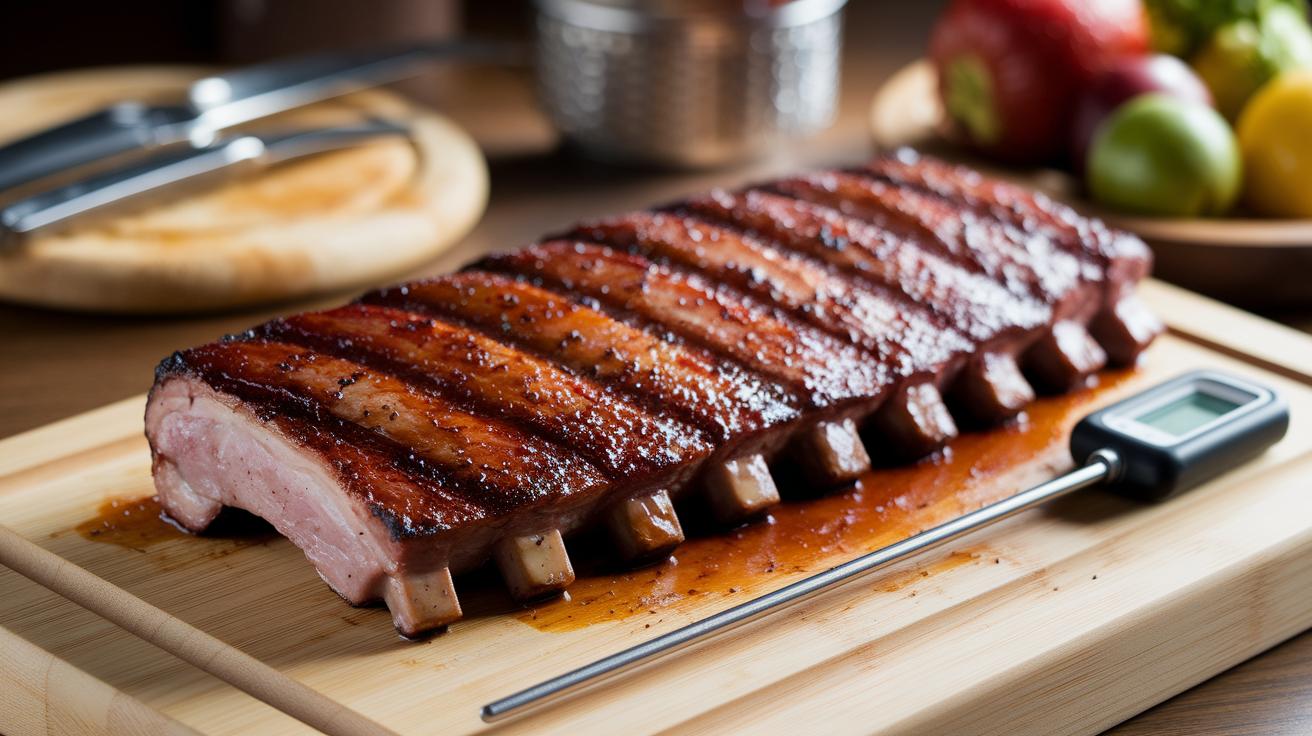
Grab a probe thermometer and stick it into the meatiest part of a rib, away from the bone, aiming for about 195°F (91°C). That’s when the meat will pull back from the bone and feel tender. Have you ever caught that smoky hickory aroma dancing around your backyard? The crunchy bark (crispy outer crust) seals in the juices as the ribs cool.
Cover the rack loosely with foil and let it rest for 10 to 15 minutes. During this break, the meat fibers relax and the moisture gets a chance to spread. Oops, I nearly forgot, always test your thermometer first. Pop it in a glass of ice water; it should read 32°F (0°C). If not, tweak it before you check your ribs.
Here’s the easy step-by-step:
- Calibrate your meat thermometer in ice water.
- Rest the ribs, covered, for 10–15 minutes to lock in the juices.
- Slice between the bones with a sharp knife, following the natural gap.
- Brush on your favorite BBQ sauce, or serve it on the side for dipping.
- Plate the ribs with fresh sides, crisp coleslaw, juicy grilled corn, or smoky baked beans.
A vinegar-based sauce gives a bright tang, while a molasses-rich sauce adds sweet depth. That scoop of crunchy slaw or those tender beans? They keep every bite lively and fun.
Storing and Customizing Your Homemade Rib Spice Rub
Keep your leftover rib rub in an airtight container (a jar with a tight lid). Find a cool, dark spot in your pantry and tuck it away. Label the jar with the day you mixed it up. Give it a good shake before you use it. This simple trick keeps your rub tasting fresh for up to six months.
Want to make a big batch? Grab a large bowl and dump in your spices. Stir them up until the aroma fills the kitchen. Split the mix into smaller jars for quick use or gifting. A kitchen scale is a handy tool to keep your seasoning ratios just right when you double or triple the recipe.
Here are a few fun twists to try:
- Sugar-free: Swap the brown sugar for erythritol (a no-calorie sugar substitute) or monk fruit (a natural sweetener). You’ll still get a hint of sweetness without the sugar.
- Low-sodium: Cut the salt in half and up the paprika or smoked paprika. That smoky color and flavor really pop.
- Coffee boost: Stir in 1 tablespoon of finely ground coffee for every 1/4 cup of rub. It adds a deep, earthy note that plays nicely with pork!
- Herb-infused: Toss in 1 tablespoon of dried thyme, rosemary, or oregano (dried leaves). They give a fresh, garden-like twist.
Oops, I once knocked over my spice jar and made a mess, no regrets though. It led to a surprise flavor happy accident!
Customizing your rib rub is as easy as mixing spices and letting your taste buds lead the way.
Final Words
You’ve mixed brown sugar, paprika, salt, and spices into a perfect rub and pressed it into each rib to rest.
You trimmed the racks and set up a two-zone charcoal fire at 225–250°F for low-and-slow cooking.
Smoke chips and bark formation give flavor, while foil (or the Texas crutch) locks in moisture.
After a brief rest, slice between the bones, pair with sauce, and serve your smoky ribs.
Store any extra blend in an airtight jar, tweak it for heat or herbs, and fire up the grill with your homemade spice rub for charcoal grilled pork ribs.
FAQ
What ingredients and ratios make up the homemade spice rub for charcoal grilled pork ribs?
The homemade spice rub combines 1/4 cup brown sugar, 2 tablespoons smoked paprika, 1 tablespoon kosher salt, 1 tablespoon black pepper, 1 teaspoon garlic powder, 1 teaspoon onion powder, and 1/2 teaspoon cayenne pepper.
How should I mix and apply the dry rub so it sticks to the ribs?
Mix all dry ingredients thoroughly in a bowl until evenly blended. Then coat ribs generously on all sides, pressing the rub into the meat so it holds firm during grilling.
How long should ribs rest with the spice rub before grilling?
Ribs should rest with the dry rub for at least 30 minutes at room temperature or for several hours in the fridge. Longer resting lets flavors sink deeper into the meat.
What steps are involved in prepping pork ribs and setting up a two-zone charcoal grill?
Trim excess fat and remove the membrane from the bone side of ribs. Light charcoal in a chimney starter. Arrange coals on one side for direct heat and leave the other side empty for indirect cooking.
How can I develop a deep bark and infuse hickory smoke flavor during charcoal grilling?
Soak hickory wood chips in water, then add them onto hot coals once the ribs start cooking. Keep the grill in indirect mode, maintain 225–250°F, and let smoke gently kiss the meat for a rich bark.
What is the foil wrapping or Texas crutch technique and when should I use it?
The foil wrapping, or Texas crutch, means sealing ribs in foil with a splash of liquid during the last hour of cooking. This traps steam, tenderizes the meat, and helps build a moist, even bark.
How do I rest, slice, and serve charcoal grilled pork ribs for the best flavor?
After reaching 195–203°F internal temperature, let ribs rest for 10–15 minutes uncovered. Slice between the bones against the grain. Serve warm with BBQ sauce and sides like coleslaw or cornbread.
How should I store leftover homemade rib spice rub and what custom variations can I try?
Store leftover rub in an airtight jar in a cool, dark place for up to six months. For variations, try swapping smoked paprika for cocoa powder, adding mustard powder for zing, or cutting sugar for a lighter mix.




